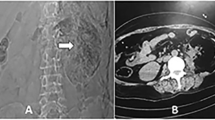Abstract
Background: Asymptomatic bacteriuria is common in diabetic women. Treatment of asymptomatic bacteriuria is not beneficial, but the natural history of the microbiology of asymptomatic bacteriuria has not been well described. Objective: To describe the microbiological outcomes of bacteriuria in diabetic women with untreated asymptomatic bacteriuria. Methods: Study subjects were initially identified through ambulatory endocrinology clinics. They were enrolled if they had two positive urine cultures ≥108 cfu/l with the same organism within 2 weeks and no symptoms referable to urinary tract infection. Women initially received a 2-week course of placebo with follow-up cultures obtained at the end of treatment and 4 weeks post-treatment. Subsequently, the prevalence of bacteriuria was determined with urine cultures obtained every 3 months to a maximum of 36 months. Outcomes at yearly intervals were designated as one of: persistent bacteriuria; spontaneous resolution; resolution with antibiotics for symptomatic urinary infection; or resolution with antibiotics given for other indications. Women with and without persistent or frequent bacteriuria were compared to identify variables associated with bacteriuria. Results: The prevalence of bacteriuria in the study cohort declined to about 50% by 9 months, and subsequently remained stable throughout 3 years follow-up. Almost 20% of subjects remained bacteriuric with the original infecting organism throughout the period of observation. With evaluation at 12-month intervals, approximately one-quarter of subjects had each of the four potential outcomes of: resolution following antibiotic therapy for symptomatic urinary infection, following antibiotic therapy for other indications, spontaneous resolution without antibiotics, and persistent bacteriuria with the same organism. Women infected with gram-negative organisms were more likely to have persistent bacteriuria. Many women with resolution of initial bacteriuria, with or without antibiotics, became bacteriuric again during follow-up. Conclusions: Women with asymptomatic bacteriuria and diabetes tend to have persistent or recurrent asymptomatic bacteriuria. Bacteriuria is benign, and seldom permanently eradicable.


Similar content being viewed by others
References
Zhanel GG, Harding GKM, Nicolle LE (1991) Asymptomatic bacteriuria in patients with diabetes mellitus. Rev Infect Dis 13:150–154
Boyko EJ, Fihn SD, Scholes D, et al. (2002) Diabetes and the risk of acute urinary tract infection among postmenopausal women. Diabetes Care 25:1778–1783
Patterson JE, Andriole VT (1997) Bacterial urinary tract infections in diabetes 11:735–750
Harding GKM, Zhanel GG, Nicolle LE, Cheang M (2002) Antimicrobial treatment in diabetic women with asymptomatic bacteriuria. New Engl J Med 347:1576–1583
Geerlings SE, Stolk RP, Camps MJL, et al. (2001) Consequences of asymptomatic bacteriuria in women with diabetes mellitus. Arch Intern Med 161:1421–1427
Semetkowska-Jurkiewicz E, Horoszek-Maziaz S, Galinski J, Maritius A, Krupa-Wojciechowska B (1995) The clinical course of untreated asymptomatic bacteriuria in diabetic patients—14 year follow-up. Mat Med Pol 27:91–95
Zhanel GG, Nicolle LE, Harding GKM (1995) Prevalence of asymptomatic bacteriuria and associated host factors in women with diabetes mellitus. Clin Infect Dis 21:316–322
Dalal S, Nicolle L, Zhang L, Marrs C, Harding G, Foxman B. Long Term Escherichia coli bacteriuria among 25 diabetic women. Abstract 146; 40th IDSA annual meeting, Chicago Ill, 25 Oct, 2002
Tambyah PA, Maki DG (2000) The relationship between pyuria and infection in patients with indwelling urinary catheters. Arch Intern Med 160:673–682
Waites KB, Kay C, Canupp MS, DeVivo MJ (1993) Epidemiology and risk factors for urinary tract infection following spinal cord injury. Arch Phys Med Rehabil 74:691–695
Hooton TM, Scholes D, Stapleton AE, Roberts PL, Winter C, Gupta K, Kamadpour M, Stamm WE (2000) A prospective study of asymptomatic bacteriuria in sexually active young women. New Engl J Med 343:992–997
Nicolle LE, Bradley S, Colgan R, Rice JC, Schaeffer A, Hooton TM (2005) IDSA guidelines for the diagnosis and treatment of asymptomatic bacteriuria in adults. Clin Infect Dis 40:643–654
Author information
Authors and Affiliations
Corresponding author
Rights and permissions
About this article
Cite this article
Nicolle, L.E., Zhanel, G.G. & Harding, G.K.M. Microbiological outcomes in women with diabetes and untreated asymptomatic bacteriuria. World J Urol 24, 61–65 (2006). https://doi.org/10.1007/s00345-005-0042-2
Received:
Accepted:
Published:
Issue Date:
DOI: https://doi.org/10.1007/s00345-005-0042-2




